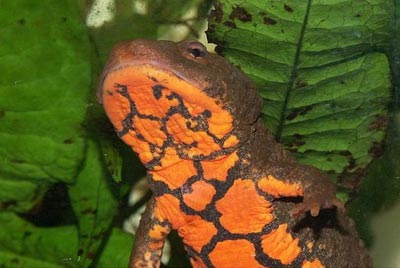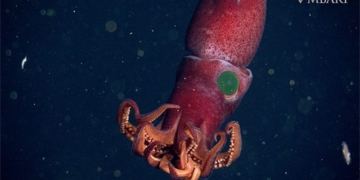Although the Paramesotriton deloustali, commonly known as the cá cóc, is considered a “treasure” of Tam Dao National Park (listed in the Red Book of Vietnam), it is still sold as a souvenir to tourists right within the national park.

“What’s so valuable about these little creatures? The kids here just catch them and peel their skin for fun. Are you going to buy some? Bringing them back to the capital to keep in a glass tank would be quite a novelty…” It sounded like a joke, but the shop owner at the foot of Tây Thiên Mountain (in Tam Dao National Park) brought out a sack weighing a few kilograms. Each cá cóc is about the size of a thumb, and it takes several of them to make just 100 grams of meat. Locally, they are known as “sấu đá” (stone crocodile) due to their resemblance to real crocodiles.
Several years ago, locals openly displayed cá cóc for sale using pots, bags, and burlap sacks along the road, meaning they were laid out in public for anyone to buy. Even if the forest rangers tried to intervene, this blatant activity would simply move into “secret operations.” Anyone wishing to buy, regardless of quantity, could easily find them. Unfortunately, people only buy them out of curiosity and not as a health supplement or a nutritious snack for drinking, so prices remain quite low. A local resident remarked, “Here, many people catch cá cóc, and there are plenty of sellers too. We know who catches and sells them. Only the forest rangers don’t know!” The ranger station has since been abandoned.
In the list of rare and endangered forest plants and animals in our country, the cá cóc is number 36. This designation acknowledges the rarity and the need for protection of this species endemic to Tam Dao.
The Red Book of Vietnam (page 235) clearly states: The cá cóc is scientifically named Paramesotriton deloustali, belonging to the family Salamandridae and the order Caudata. It is classified as endangered (level E, critically endangered). It is recognized as one of the five species of cá cóc in Vietnam, according to a collaborative research program on biodiversity in Vietnam between the Institute of Ecology and Biological Resources and the Konic Bon Museum of Zoology (Germany).

Thus, the legal protection measures for this rare endemic species, which has an extremely limited distribution range, have been thoroughly prepared by both local and international entities. However, this does not mean that they are safe.
A scientist traveled from the capital to Tây Thiên to collect cá cóc samples for experimental breeding at the Thủ Lệ Zoo, but it was unsuccessful because that environment was not suitable for the cá cóc.
There was also a project named PARC that included the cá cóc on the list of 102 species needing protection in the Ba Bể – Na Hang conservation complex, emphasizing the scientific value of this amphibian species residing in the Tam Dao area. Yet in reality, no one is stopping the fishing and public trading of the cá cóc.


















































